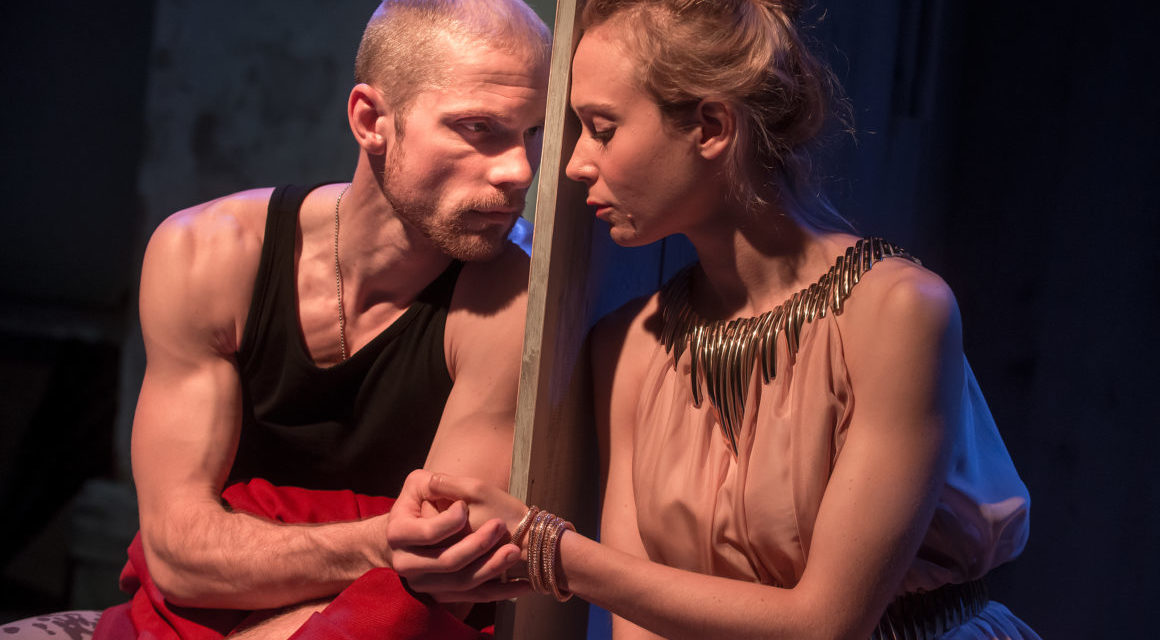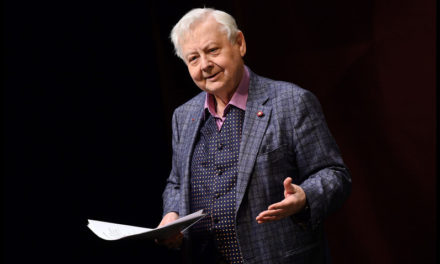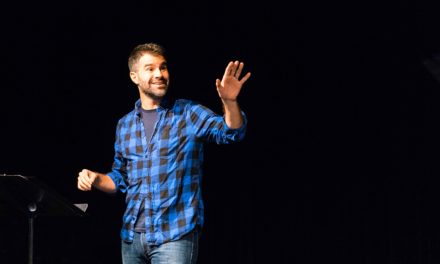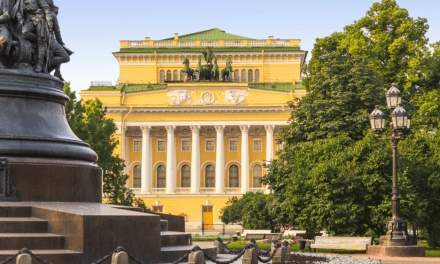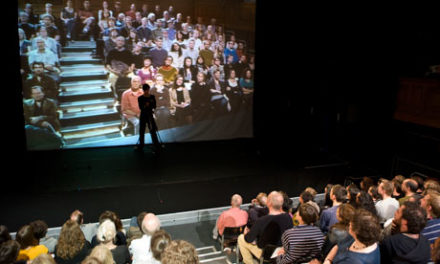Interviewers: Liisi Aibel, Heidi Aadma
In our small country, the Estonian and Russian theatre scenes are relatively separate. The audience tends to remain segregated as well. What are the main causes of that?
The Estonians and Russians have an unfortunate habit of sticking to their own paths. Ever since Estonia was occupied by Russian forces during World War II, each family carries its own historic trauma. A thing like that lives on in people for a very long time. Since our independence was restored, we have only had just over a quarter of a century to process these traumas – but social science says it takes three generations for integration as such to reach a positive outcome. Therefore, the two nationality groups tend to also be separated in theatre. One can add a language barrier and the resultant lack of information to the mix. For example – marketing departments tend to be made up of relatively young people who don’t speak Russian and don’t translate their press releases into Russian. Consequently, when it comes to the Estonian language theatre scene, much of the Russian- speaking population lives in an information blackout. To add to the problem, Russian language culture journalism in Estonia is in a dire state. I’ve got a friend who has taken it upon herself to translate press releases about contemporary theatre and dance productions into Russian and distributes them to her friends, but essentially it cannot remain the effort of a single private citizen.
When anything gets translated these days, it tends to be into English …
That stems from the reality that everyone speaks English and it’s not a difficult task. Whereas translating into Russian takes much more effort – I am not capable of translating a press release into Russian, either … However – in truth, good theatre surpasses language. I know a couple from St. Petersburg who regularly attends performances at the Estonian Drama Theatre. They both make the trip especially, even though neither of them speaks a word of Estonian. Furthermore, the Estonian Drama Theatre no longer offers a synchronized translation service, but since they have already found something here that has touched them, they keep coming back time and again.
You have been a part of several productions that facilitate the meeting of Estonian and Russian theatre practitioners. How easy or complicated is it to bring artists of two different nationalities together and get them to toil for the same goal?
It is not difficult at all to bring people like that together, there is a great deal of interest towards each other. The problem is not that someone would not wish to come to join, but that nobody has ever asked them if they would like to join. At Second Sight (directed by Mari-Liis Lill and Paavo Piik), a collaboration between Tallinn City Theatre and Russian Drama Theatre of Estonia was a long-term project – the Estonians learned Russian and the Russians learned Estonian for a few years before the production even made it to rehearsal. At times the enthusiasm did falter, of course. The whole process gave the Estonian cast members the best kind of feedback on a notion that we tend to hold from our point of view – how come ethnic Russians have not managed to learn to speak Estonian after living here for decades – by trying to actively learn to speak Russian themselves, alongside all their daily work, it led to a much better understanding of why that is. Fair enough, we had two years, they have had twenty-five, but daily work takes up the same amount of time and energy, so without having a very, very high level of motivation, human beings are simply lazy. Just like our cast members found themselves thinking at times they will just learn this monologue by heart and won’t bother with trying to learn the language, it’s just too difficult. It certainly led to a much greater understanding of each other.
How favorable a place is the stage for dissecting topics such as social or ethnic issues? Have you received any audience feedback as to if and how much it changed the way people think?
My view is that the theatre is as good a place for this as any. When Estonians and Russians meet at football practice, that’s pretty great already. When they attend the same summer camp, that’s very good. When they happen to be working on the same team and like to chat in the smoking area, that’s also wonderful. When they do that in the theatre, that’s better still. Ideally, the theatre can have the effect that in addition to the actors meeting on stage, it also affects the audience. The reactions to both productions were very controversial, as they address things that lie deep in emotional memory. For example – the understanding of what one can and cannot joke about can be quite different. In At Second Sight we tend to poke fun at Estonians more, as we – the writer-directors – are Estonian ourselves, so that comes far more easily. It would appear somewhat unfair to create a performance lasting an hour and a half to only laugh at the expense of the Russian population, since we – the Estonians – are currently the ethnic majority in this country, in a stronger position, and it’s not nice to pick on those who are weaker.
Nevertheless, the production does feature a scene called “The Poor Russian,” aimed rather sharply at those of the local Russian population who are never satisfied with anything. It is rather significant that a member of the technical crew from the Russian Theatre refused to work on our production after having seen this particular scene in rehearsal. So indeed, this topic does flare up emotions. When it comes to audience response, I have never before received so much feedback as I have with these two productions. After a performance of At Second Sight, I received a letter from an audience member with the following comments: “I went to the theatre thinking that all Russians are idiots, I saw the piece, listened to Sergey’s monologue and realized that actually, they’re pretty normal people. I apologize, I feel rather embarrassed and it was a really remarkable experience.” That, for me, is the best kind of feedback there is.
I’d Rather Dance with You (directed by Oleg Soulimenko), a collaboration between Vaba Lava and R.A.A.A.M, is essentially more ambivalent. It does not set out to seek a common language. It features four people “from the street” that hold relatively extreme views – old and young, Estonians and Russians. One who will only watch Russian television and looks up to Putin, and another who is an Estonian nationalist with a keen interest in history. It is beyond obvious that these two can’t possibly agree with each other. And if they are provoked with pointed questions, then naturally they will become agitated and get into an argument. The performance does not have a happy end and nobody walks away into the sunset holding hands. Therefore, with I’d Rather Dance with You, the most frequent comment we get from the audience is that people held a much more positive understanding of how things are and that the problems at the focus of the show had largely been consigned to history.
Living in our everyday bubble, as Estonians, it appears to us that all the animosity between nationality groups has evaporated, but this production demonstrates vividly how extreme the views of the representatives of different nationalities can still be, how easily it can lead to arguments and how impossible it is to reach agreement on certain issues.
Oleg Soulimenko, the director of I’d Rather Dance with You is an ethnic Russian but resides in Austria. How did he – from his outside viewpoint of sorts – relate to this subject and how did he steer it?
Soulimenko’s strength is that he is not held back by the opinion of his compatriots. Community pressure to have ‘the correct opinion’ is a particularly fascinating subject that I have come across during these collaboration projects. More so on the Russian side, but also on the Estonian side. For example, we are also making a TV show based on the same subject, where ethnic Russians resident here introduces viewers to their version of Estonia. When we first meet them, many speak of how they would wish to go stand next to the Bronze Soldier statue and talk about how embarrassed they feel about the local Russians who visit there, and although their grandfathers also perished in World War II, they no longer want to belong to the same group of people who celebrate the anniversary by drunkenly shouting ‘Rossiya!’ from car windows at passers-by and waving Soviet flags. But when we meet them next, they speak of how they’ve had time to think and since the programme is also broadcast on ETV+ (the Russian language channel of the Estonian national broadcaster), they would prefer not to address the subject in such a way after all. They are restrained by the comme il faut of their ethnic community. It is fascinating to witness those boundaries. Ideally, we ought to be able to freely express the opinions that we hold in Estonian, Russian, English or even in Korean, if necessary.
At Second Sight and I’d Rather Dance with You are different in form but similar in their creative method – both productions were created chiefly through group work. Is that – and if so, how much – an asset when dealing with the question of ethnic relations?
For me, very much so. Perhaps it would work just fine if a good Estonian playwright wrote a nice play about integration, but then the primary point of it would be lost … In such a case, the production would mainly count as a strong theoretical effort. But when Estonians and Russians actually meet in rehearsal, it adds the element of practice. We may well try and imagine what problems local Russians face or read up on statistics from newspapers and come to conclusions based on that, but the unfiltered personal experience is still something different entirely and that can’t be replicated. Especially in a situation where many Estonians have no daily contact with Russians. This means that unless we actually meet in a rehearsal room, then those issues would have to literally be made up.
Who makes up the audience for integration pieces and who could it ideally include?
When making At Second Sight we dreamt of an audience where about half or even slightly more than half would be made up of people who speak Russian as their mother tongue. The audience for this production consists of three groups of people – patrons from Tallinn City Theatre, and from the Russian Theatre, both of whom we hijack and bus across the city to a civic centre theatre space in the district of Lasnamäe, where they are joined by the third group – people who have the opportunity to purchase a ticket locally. Since Lasnamäe is a predominantly Russian-speaking area, we hoped to attract a large number of Russian people. We didn’t. On average, the audience has been made up of approximately three-quarters of Estonians and a quarter of Russians, which in its own way represents a pretty fair cross-section of the population, as Estonia has an ethnic Russian population of about 25-30 percent. The somewhat lukewarm level of interest from the Russian side of the audience is also understandable – when you use the word integration, an Estonian will politely listen to what you’ve got to say. When you utter the same word to a Russian, they often turn their back and head out the door, because it carries a very different meaning for Russians – it equals assimilation, governmental pressure, which has been talked about ad nauseam without reaching any concrete results. Therefore, it is somewhat to be expected that making a stage production of integration is going to scare people off a bit at first.
I’d Rather Dance with You – performed at the Vaba Lava theatre center – had showings with perhaps just ten people who spoke Russian as their first language among the spectators, which is a mere two percent of the audience. There are most likely two reasons behind that. First, many local Russians are simply not yet aware of the existence of Vaba Lava, since it’s a relatively new performance venue. Second, I’d Rather Dance with You is not really a conventional production in many ways. There’s no real story and the people move funny … The director Soulimenko said that for him as an outside eye, the local Russians tend to be far more conservative than Estonians. Including young people. Conservatism among minority ethnic groups is a whole other subject in its own right: with your identity on fragile ground, to begin with, not living in the homeland of your ancestors and not having been accepted yet, you are even more bound to look for something to hold on to – and that something to hold on to is most often found in the past. Everyone likes Dostoevsky; Chekov is loved by all, too. That is the something to hold on to.
Article translated by Kaur Sinissaar
This article was originally published in Estonian Theatre newspaper in summer 2017 and has been reposted with permission.
This post was written by the author in their personal capacity.The opinions expressed in this article are the author’s own and do not reflect the view of The Theatre Times, their staff or collaborators.
This post was written by Liisi Aibel.
The views expressed here belong to the author and do not necessarily reflect our views and opinions.

